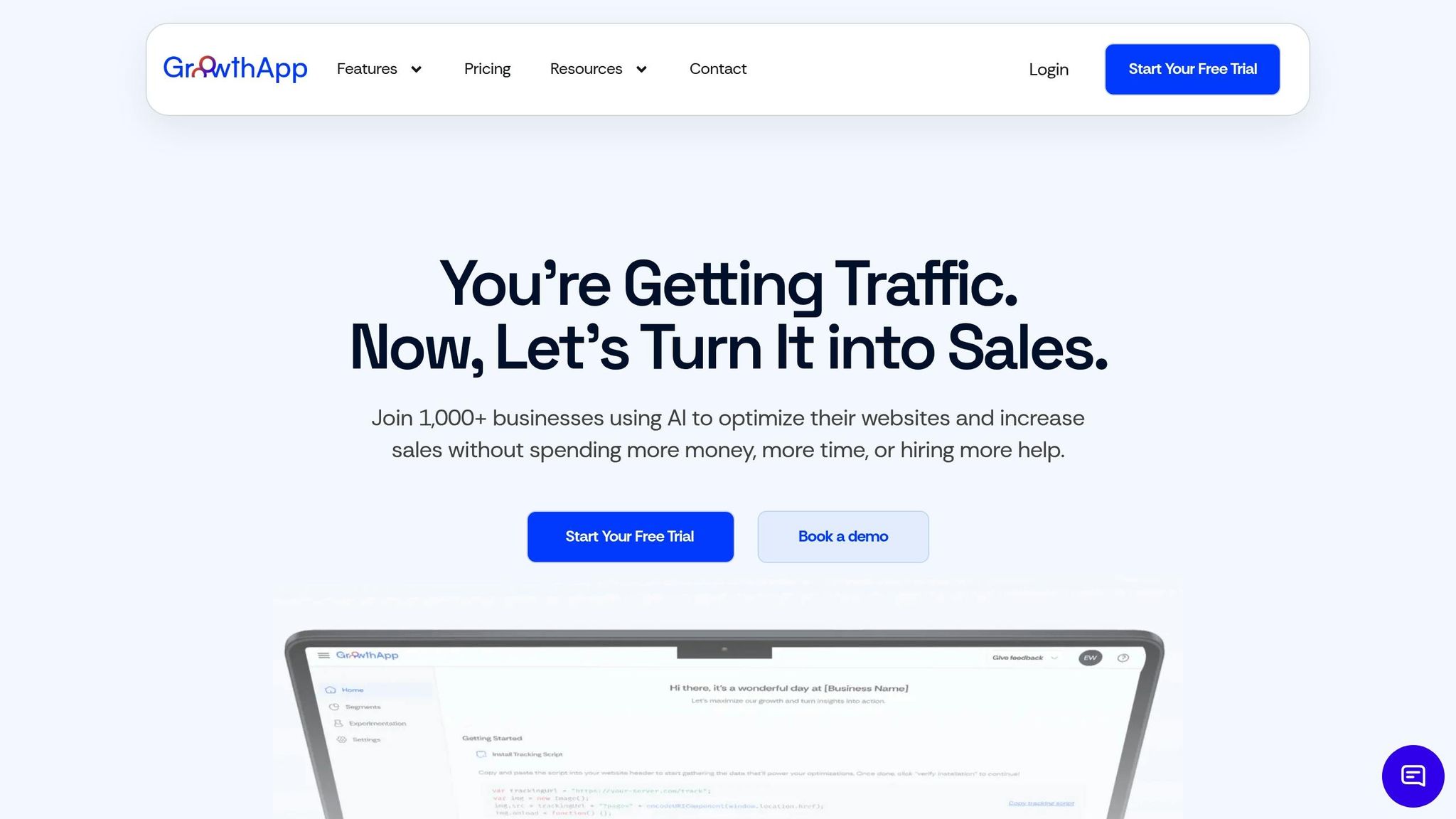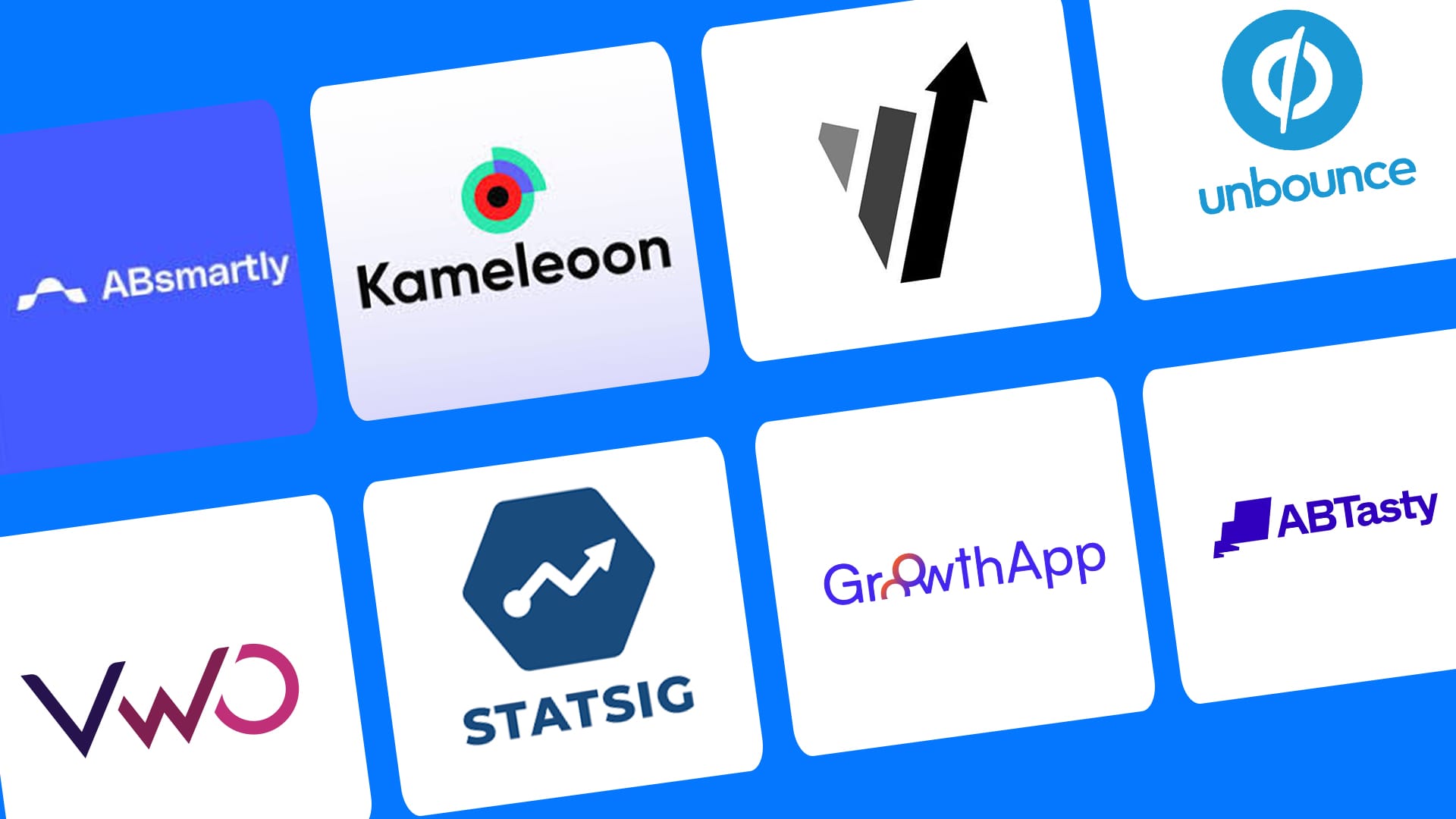Want to increase engagement by 4x? Automated segmentation is the answer.
It uses AI to analyze customer behavior instantly, creating precise audience groups. This leads to:
- 14.31% higher email open rates
- 101% more clicks
- Up to 760% revenue growth
AI-powered tools like GrowthApp AI help businesses save time, improve personalization, and predict customer behavior. For example, MetLife saved $800 million annually by segmenting customers based on behavior.
With 73% of customers expecting tailored interactions, automated segmentation is no longer optional. Start analyzing purchase history, browsing habits, and geographic data to deliver targeted content and boost engagement.
Understanding Automated Segmentation
What is Automated Segmentation?
Automated segmentation leverages AI to analyze customer data and divide audiences based on behaviors and demographics. Unlike manual methods, which update data periodically, AI processes large volumes of customer information continuously, creating more precise audience groups.
Key data points analyzed include:
- Purchase history
- Website browsing behavior
- Geographic location
AI algorithms also ensure the data remains accurate, resulting in reliable segmentation outcomes. Beyond the technical process, this approach offers marketers clear, practical benefits.
"Our AI engine uses customer data, such as transaction history, quiz responses, and browsing behavior, to segment customers by their candida severity and unique needs and prepare content chunked for their context." – Lisa Richards, CEO of the Candida Diet
Main Advantages
The technical features of automated segmentation provide real-world marketing benefits.
| Advantage | Impact |
|---|---|
| Improved Accuracy | Companies are 2.3x more likely to understand buyer intent and 1.6x better at identifying customer challenges |
| Time Efficiency | Marketers save an average of 5 hours per week using AI tools |
| Enhanced Engagement | Email open rates increase by 14.31%, and clicks improve by 101% |
AI-powered segmentation also enables predictive analytics, helping businesses anticipate future customer behaviors and preferences. This real-time processing allows marketers to spot new audience segments quickly and adjust campaigns with minimal effort, ensuring their strategies stay relevant.
Personalization plays a huge role in customer satisfaction, with 73% of consumers expecting tailored experiences. The combination of speed, precision, and scalability makes automated segmentation a game-changer for delivering these personalized interactions and driving engagement.
Setting Up Automated Segmentation
Data Collection Setup
Automated segmentation starts with gathering data from multiple sources. Combine information from your CRM, website analytics, and social media platforms into a single system. This gives AI algorithms the detailed and accurate data they need to work effectively.
Here are some key data sources and what to track:
| Data Source | Key Metrics to Track |
|---|---|
| Website Analytics | Page views, time spent on site, conversion paths |
| CRM System | Purchase history, support tickets, engagement scores |
| Social Media | Interactions, shares, sentiment trends |
| Email Platform | Open rates, click-throughs, unsubscribe patterns |
Once your data is centralized, AI can begin identifying user behavior patterns.
AI Segmentation Methods
With all your data in one place, AI can help uncover meaningful patterns in customer behavior. Here’s how:
-
Behavioral Pattern Recognition
AI tracks user actions to spot common trends, such as product views, cart abandonment, and completed purchases. As Jon Miller puts it, "Knowing who your customers are is great but knowing how they behave is even better". -
Predictive Analytics Integration
By analyzing historical data, AI predicts future behaviors and groups users based on these forecasts. This allows you to engage customers based on anticipated actions rather than just their past behavior. -
Dynamic Segment Updates
Segments are updated in real time as user behaviors change, ensuring your strategies remain relevant and timely.
Creating Custom Experiences
Using insights from dynamic segmentation, you can deliver tailored experiences at every customer touchpoint.
Content Personalization Strategy
Match content to each segment’s behavior. For instance, new visitors could see introductory materials, while loyal customers might receive special offers or rewards.
Channel-Specific Optimization
| Channel | Optimization |
|---|---|
| Dynamic content based on segment preferences | |
| Website | Personalized landing pages and product suggestions |
| Mobile App | Custom push notifications and in-app messages |
"Behavioral segmentation is about understanding customers not by who they are, but by what they do, using insights derived from customers’ actions".
Key Features for Segmentation
Must-Have AI Functions
Effective AI segmentation depends on several critical capabilities:
- Real-Time Processing: AI analyzes and segments visitors instantly, allowing for immediate personalization.
- Predictive Analytics Engine: Advanced AI predicts future behaviors and spots opportunities to refine strategies proactively.
| Function | Purpose | Impact |
|---|---|---|
| Behavioral Pattern Recognition | Identify common user actions | Enables targeted engagement |
| Data Quality Assurance | Clean and validate customer data | Improves segmentation accuracy |
| Cross-Platform Integration | Connect with marketing tools | Creates a unified customer view |
| Dynamic Updates | Continuously update segments | Keeps personalization relevant |
GrowthApp AI Features

GrowthApp AI takes these foundational functions further by offering advanced tools to enhance engagement:
- Behavior-Based Segmentation: The AI engine evaluates various interaction points – like transactions, browsing habits, and response data – to create highly accurate customer segments.
- Smart Integration System: It seamlessly connects with existing websites and marketing tools, ensuring unified data collection and consistent personalization. This feature alone saves marketers an average of five hours per week.
-
Engagement Optimization: As Ricardo Madan, Senior Vice President of TEKsystems Global Services, explains:
"make these experiences more seamless for the users and more efficient or profitable for the companies they’re working with. All of this is optimized when the analytics effectively segment users earlier in the customer experience"
Chuck Schaeffer, CEO of Johnny Grow, highlights the business benefits:
"Defining business processes by customer type or segment is extremely effective in growing revenues and margins from high-contribution customers and lowering cost-to-serve for low or negative-margin customers"
These features contribute directly to a fourfold increase in engagement by leveraging behavioral insights. With 73% of customers expecting personalized experiences and more than half becoming repeat buyers after tailored interactions, GrowthApp AI’s segmentation tools deliver clear, measurable outcomes.
sbb-itb-22854bb
How to Build Customer Segments with AI (Real-World Use …
Tracking and Improving Results
Once your segmentation is set up, keeping an eye on performance is key to maintaining strong engagement levels.
Key Metrics to Monitor
Keep track of metrics like email open rates, clicks, and revenue to measure how well your segmentation efforts are working.
| Metric Category | Specific Metrics | Improvement |
|---|---|---|
| Overall Campaign | Email Open Rates and Clicks | +14.31% opens, +101% clicks |
| Purchase History | Open Rates and Clicks | +10% opens, +15% clicks |
| Geographic Segmentation | Open Rates and Clicks | +12% opens, +18% clicks |
| Interest Segmentation | Open Rates and Clicks | +15% opens, +20% clicks |
| Revenue Impact | Revenue per Campaign and ROI | Up to 760% growth |
These numbers provide a foundation for making informed adjustments over time.
Testing and Updates
A/B testing is essential for consistently improving results. For example, SwayChic tested 30-50 variables, such as timing, purchase history, and conversion patterns. This approach led to a 40% increase in open rates, doubled clickthrough rates, and tripled campaign revenue.
"Marketing for us is based on timing and tracking customer behavior. It’s helped us really hone in and keep a keener eye on how to recognize those behaviors and utilize them to make more money."
– Cheyanne Sequoyia-Mackay, Project Manager, SwayChic
Example: 4x Engagement Case
PandaDoc‘s success highlights the power of testing and data-driven updates. By analyzing visitor actions – like browsing features, engaging with blog posts, and visiting pricing pages – they created tailored welcome sequences. This strategy resulted in 88% signup retention, precise messaging, and a 4× engagement increase.
These improvements not only boosted engagement but also reduced marketing costs by up to 30% and increased customer lifetime value by 25%.
Conclusion
Automated segmentation has proven to dramatically improve engagement metrics. For example, it leads to a 14.31% increase in open rates, generates 101% more clicks, and contributes to a 58% boost in revenue share, along with a 20% rise in ROI. Companies using AI-driven segmentation also gain a deeper understanding of customer challenges (60% improvement) and predict customer intentions with 130% greater accuracy.
Real-world cases demonstrate how segmentation delivers measurable results. GrowthApp AI enables businesses of all sizes to tap into these advantages. One e-commerce brand, for instance, recovered 30% more abandoned carts automatically, while Smoov achieved a 42% increase in signups through personalized onboarding.
"We took a break from spending thousands of dollars in ads and redesigning our website, plugged Growie into our website instead, and in 2 months, we went from 0 leads to 50 sign ups."
– Martin Kovachev, Growth Marketer at Happy Mammoth



